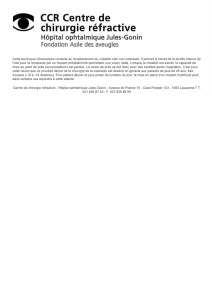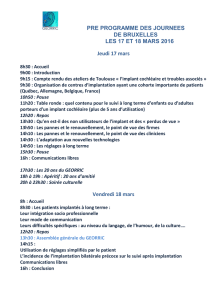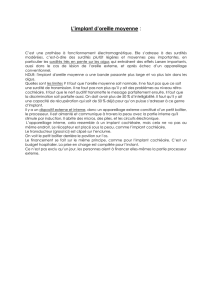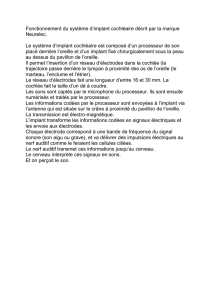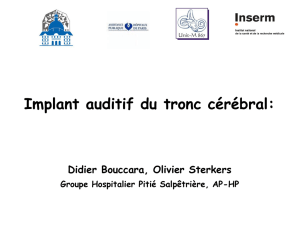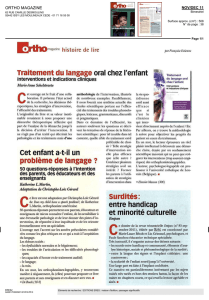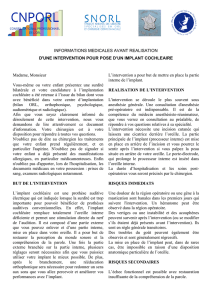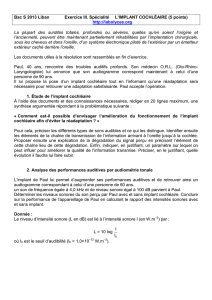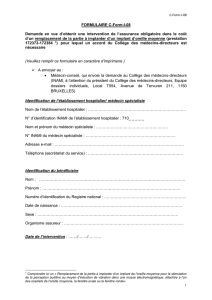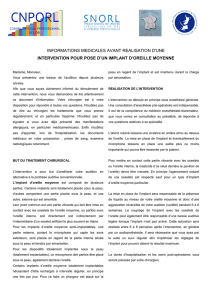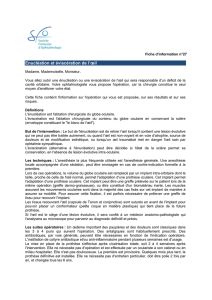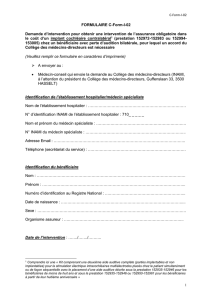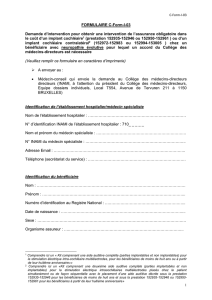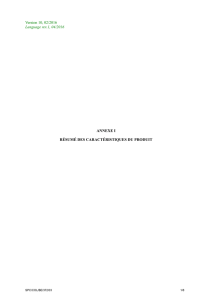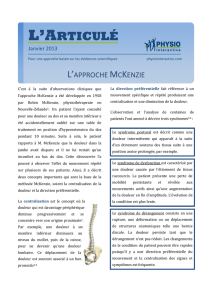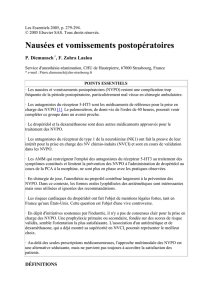Acute postoperative spinal infection (< 1 month)
publicité
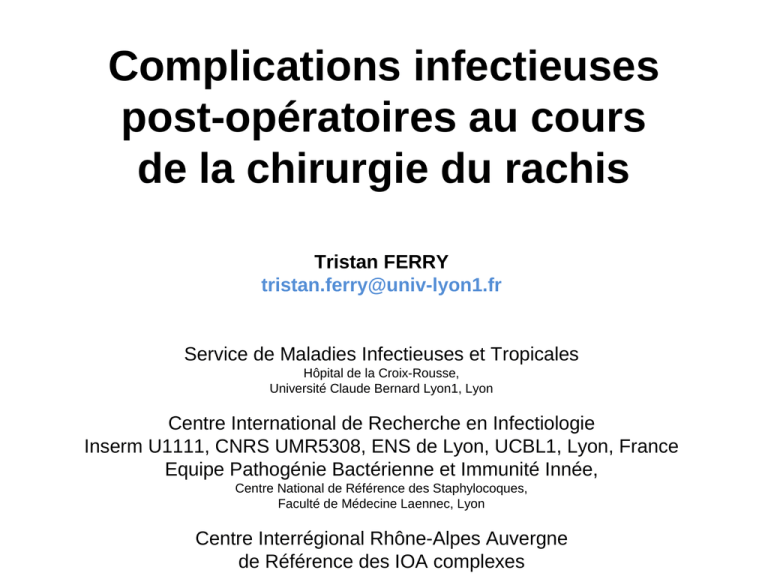
Complications infectieuses post-opératoires au cours de la chirurgie du rachis Tristan FERRY [email protected] Service de Maladies Infectieuses et Tropicales Hôpital de la Croix-Rousse, Université Claude Bernard Lyon1, Lyon Centre International de Recherche en Infectiologie Inserm U1111, CNRS UMR5308, ENS de Lyon, UCBL1, Lyon, France Equipe Pathogénie Bactérienne et Immunité Innée, Centre National de Référence des Staphylocoques, Faculté de Médecine Laennec, Lyon Centre Interrégional Rhône-Alpes Auvergne de Référence des IOA complexes Définition Infection du site opératoire • ISO : – Présence de pus ou d’un liquide puriforme provenant d’une cicatrice – Présence de signes inflammatoires locaux nécessitant une ouverture – Présence d’un microorganisme, associé à des PNN, en culture à partir d’un prélèvement du site infecté… • Profondeur : – Superficielles (au dessus aponévrose) – Profondes • Délai : – Précoce <1 mois (retardées 1-3 mois) – Tardives >1 mois, jusqu’à 1 an ? • Sur matériel ou non Epidémiologie Différence majeure dans la prise en charge • ISO superficielle – Reprise de la cicatrice (sus-aponévrotique) – Antibiothérapie simple (1 seul antibiotique) pendant 15 jours à 3 semaines • ISO profonde (spondylodiscite postopératoire) – Reprise de la cicatrice – Documentation en sous-aponévrotique, évacuation d’un éventuel abcès – Antibiothérapie souvent double plusieurs semaines/mois – Si matériel : Lavage si infection précoce/stabilité Dépose du matériel si infection chronique ? Postoperative spinal implant infection • Implant-associated BJI is the most difficult-to-treat infectious disease • Postoperative spinal implant infection is infrequent, but costly • Identify: – Host-related risk factors – Procedure-related risk factors * Risk factors for PJI * * Procedure-related risk-factors Posterior fusion T1-T12, L1-L5, S1 Laminectomy L1-S1 Posterior arthrodesis with cages Invasiveness index value = 47 ISO profonde sur matériel : Inoculation directe Inoculation directe Hématogène secondaire 1 mois 3 mois 12 mois Risque de rechute d’un traitement conservateur (lavage chirurgical et antibiothérapie adaptée à durée déterminée) au cours des infections du rachis sur matériel % d’échec 100 % 50 % Lavage 1 mois 3 mois Temps LE BIOFILM Production d’exopolysaccharide )(slime Engainement des bactéries Vie en communauté (constitution )de galeries Résistantes aux agressions (systême immunitaire, )antibiotiques Indissociable du matériel Etapes de la colonisation du matériel par S. epidermidis 2h 4h 8h 24 h Fixation des staph sur des irrégularités à la surface du matériel Début de fabrication du "slime " La surface du matériel est recouverte par une couche épaisse de "slime" Des bactéries émergent du biofilm, libres et prêtes à se fixer ailleurs Microphotographies Olson, Ruseska, Costerton J. Biomed Mater Res 1988 3 month’s therapy might not be adequate for all patients 52 year-old man with acute spinal implant infection • Active kidney neoplasm with cervical C6 compressive metastasis • Corporectomy (C6), osteosynthesis and bone grafting • Acute spinal implant infection • Debridement and implant retention (S. aureus) • Duration of antimicrobial therapy extended to 6 months C. Barrey and T. Ferry 72 year-old woman with acute spinal implant infection • Diabetes • Myelopathy with severe cervical degenerative spine • Anterior and posterior osteosynthesis • PEEK cages • Acute spinal implant infection • Debridement and implant retention • Multidrug resistant Klebsiella pneumoniae • Prolonged intravenous antimicrobial therapy The antimicrobial therapy could be stopped if the implant is removed Usual medicosurgical approach • Acute postoperative spinal infection (< 1 month) – Debridement and implant retention – Inoculum reduction and microbiological diagnosis – Antimicrobial therapy WE CAN STOP, BUT WHEN? • Chronic postoperative spinal infection – Debridement and implant explantation – Biofilm eradication and microbiological diagnosis – Antimicrobial therapy WE CAN STOP, BUT WHEN? • Chronic postoperative spinal infection – Debridement and implant retention or partial exchange – Microbiological diagnosis but persistence of the biofilm – Antimicrobial therapy followed by “suppressive” therapy DON’T STOP! 22 year-old woman with chronic spinal implant infection • Scoliosis • Fistula 6 years after posterior instrumentation • Total implant explantation (E. faecalis) • Duration of antimicrobial therapy (IV then oral amoxicillin) for 3 months • C. Barrey and T. Ferry Data in the literature? Usual medicosurgical approach • Acute postoperative spinal infection (< 1 month) – Debridement and implant retention – Inoculum reduction and microbiological diagnosis – Antimicrobial therapy WE CAN STOP, BUT WHEN? • Chronic postoperative spinal infection – Debridement and implant explantation – Biofilm eradication and microbiological diagnosis – Antimicrobial therapy WE CAN STOP, BUT WHEN? • Chronic postoperative spinal infection Patients without bony union in the few months following instrumentation – Debridement and implant retention or partial exchange – Microbiological diagnosis but persistence of the biofilm – Antimicrobial therapy followed by “suppressive” therapy DON’T STOP! Toute IOA est complexe… car multidisciplinaire Prise en charge chirurgicale Orthopédiste / Neurochirurgien IOA Microbiologie Diagnostic Physiopathologie Prise en charge médicale Infectiologue Conclusion • Bien distinguer les infections post-opératoires : – Superficielles ou profondes – Aiguës ou chroniques – Avec ou sans matériel • Importance de la reprise chirurgicale la plus précoce possible, en dehors de toute antibiothérapie • Nécessité d’une collaboration étroite entre chirurgien, microbiologiste et infectiologue • Place des centres de référence Lyon Bone and Joint Infection Study group • Physicians – Tristan Ferry, Thomas Perpoint, André Boibieux, François Biron, Florence Ader, Anissa Bouaziz, Judith Karsenty, Fatiha Daoud, Johanna Lippman, Evelyne Braun, Marie-Paule Vallat, Patrick Miailhes, Florent Valour, Christian Chidiac, Dominique Peyramond • Surgeons – Sébastien Lustig, Franck Trouillet, Philippe Neyret, Olivier Guyen, Gualter Vaz, Christophe Lienhart, Michel-Henry Fessy, Cédric Barrey • Microbiologists – Frederic Laurent, François Vandenesch, Jean-Philippe Rasigade • Nuclear Medicine – Isabelle Morelec, Emmanuel Deshayes, Marc Janier, Francesco Giammarile • PK/PD specialists – Michel Tod, Marie-Claude Gagnieu, Sylvain Goutelle • Clinical Research Assistant – Marion Martinez
